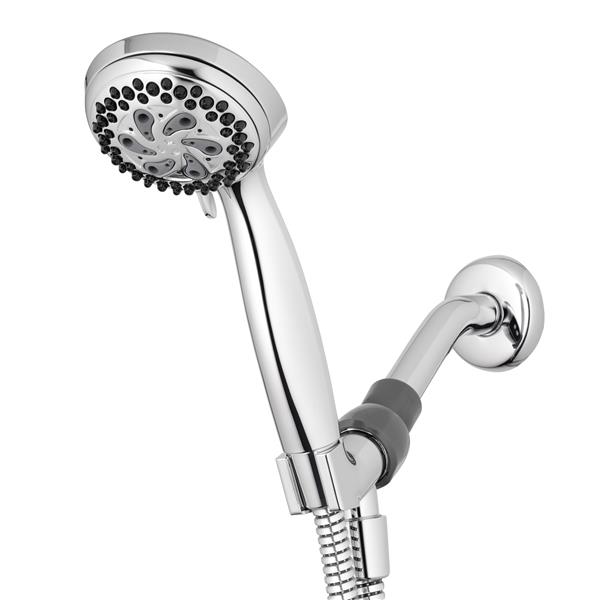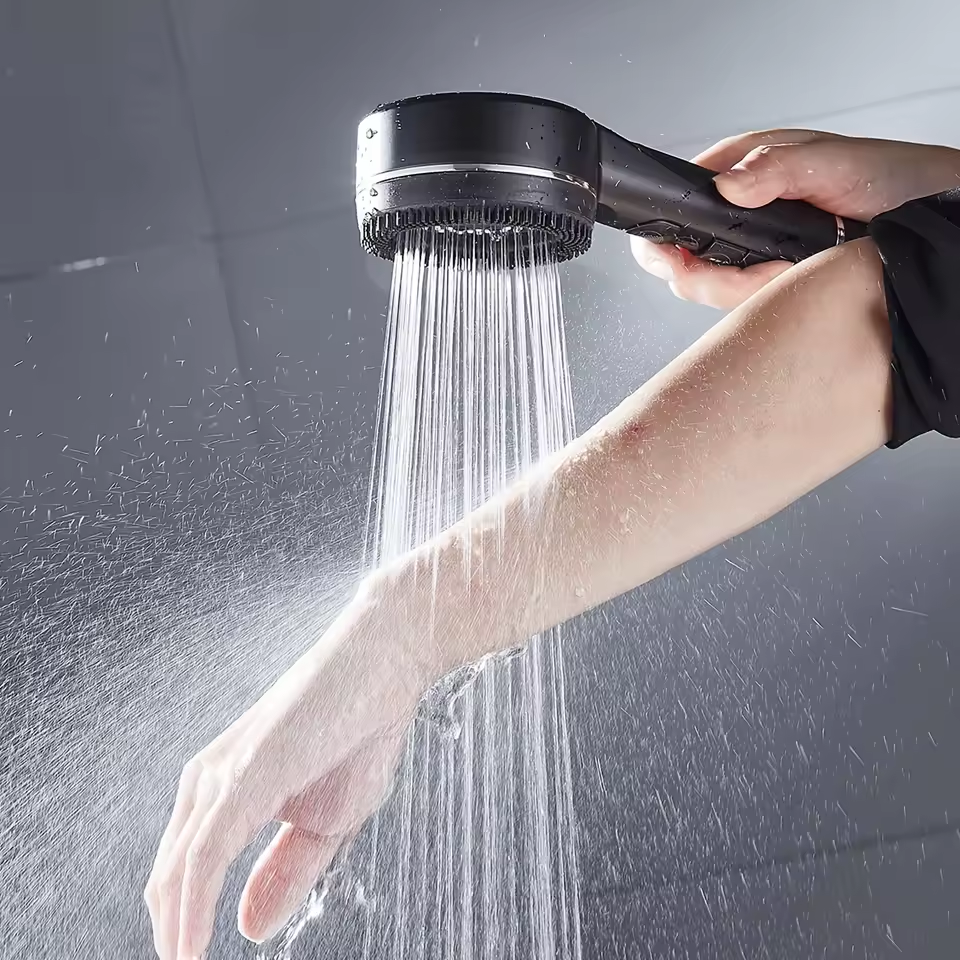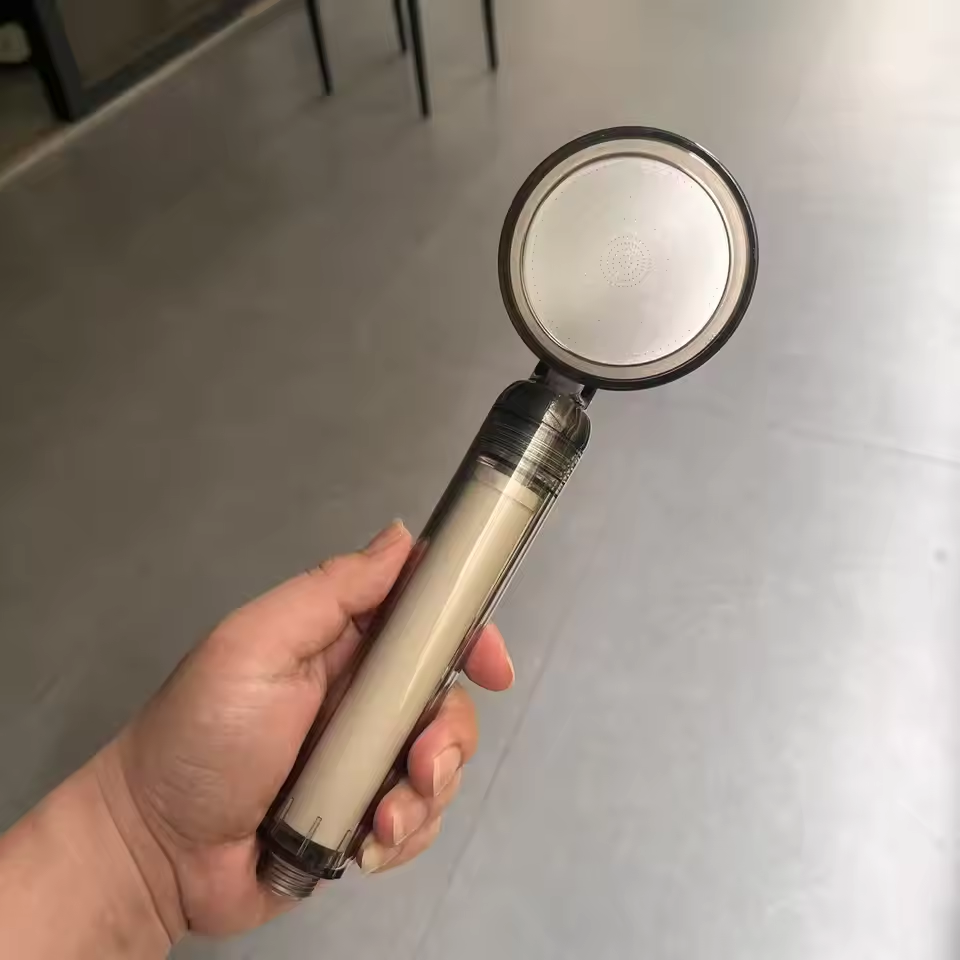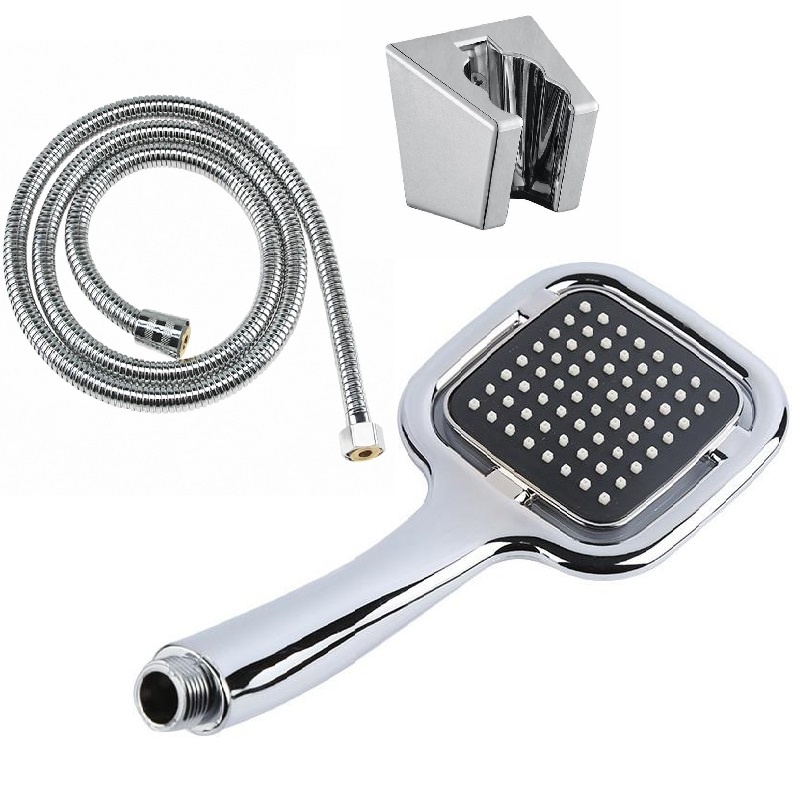Benefits of Low Flow Shower Heads
The switch to a low flow shower head can offer a multitude of advantages for both the individual and the planet. Emphasizing these benefits can encourage homeowners to make a change that not only saves money but also contributes to water conservation efforts.
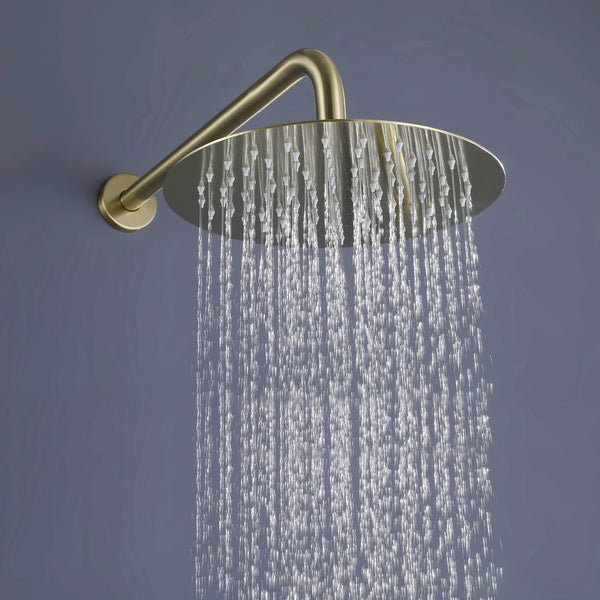
Reduced Water Consumption
One of the prime benefits of a low flow shower head is significant savings in water usage. These devices are designed to use less water per minute compared to conventional shower heads. By optimizing flow rate, they can cut down water consumption by as much as 50%. This means fewer gallons per shower, resulting in a direct reduction in your water bill and less strain on water resources—a win for both the wallet and the environment.
Lower Energy Costs
Less water used means less energy required to heat that water. Low flow shower heads contribute to a decrease in energy consumption since it takes less energy to heat a smaller volume of water. This can lead to noticeable savings in your energy bills, especially over time. The reduction in energy use also has the added benefit of reducing your home’s carbon footprint.
Environmental Impact
The environmental benefits of low flow shower heads extend beyond just water and energy savings. By decreasing water and energy use, you’re also playing a part in reducing the greenhouse gases associated with water heating and treatment. This simple switch can contribute to the greater goal of conserving natural resources and protecting ecosystems from the overuse of water. The cumulative effect of broad adoption of low flow technology can make a substantial impact on the environment.
How Low Flow Shower Heads Work
Understanding the mechanics behind low flow shower heads is key to appreciating their benefits. These devices operate by maintaining water pressure while reducing the amount of water that flows through. Let’s explore the core principles.
The Science of Water Pressure
Low flow shower heads are engineered to deliver a feeling of abundant water flow. This is while actually using less water. They use pressure compensating flow regulators. This ensures a consistent flow regardless of changes in water pressure. These regulators control the flow of water, resulting in a steady, satisfying shower experience.
Flow Rate Technologies
These shower heads incorporate advanced technologies to manage flow rate. The most common ones are aerating and non-aerating systems. An aerating system mixes air with water. This creates a misty spray that uses less water yet feels full. Non-aerating systems focus on water streams. They form larger water droplets for a strong spray without extra water. New flow rate designs continue to emerge. They are guiding the next generation of eco-friendly bathing solutions.
Types of Low Flow Shower Heads
Choosing the right low flow shower head can significantly affect your water-saving efforts. Each type comes with unique mechanisms and benefits, catering to different preferences and necessities. Exploring the three main types can help you make an informed decision.
Aerating
Aerating low flow shower heads mix air with water. This process creates a misty spray. The air blends with the water as it flows, giving the sensation of more volume. These shower heads can reduce water usage without sacrificing comfort. They are perfect for those who enjoy a soft, relaxing shower experience.
Non-aerating
Non-aerating models rely purely on water streams. They deliver larger water droplets for a powerful spray. These shower heads maintain temperature better, as they do not cool the water with air. They are a great choice if a strong, invigorating spray is preferred.
Laminar-flow
Laminar-flow shower heads produce individual streams of water. They create a consistent flow, offering a rain-like shower experience. They also reduce water mist and steam, perfect for those looking to maintain clearer mirrors during a shower.
Each type of low flow shower head promotes water conservation. They do this while also addressing different showering preferences. They draw less water, save energy, and reduce costs—aligning with eco-friendly practices.
Making the Switch to Low Flow Shower Heads
Deciding to replace your traditional shower head with a low flow model is a positive step towards sustainability. This change can contribute not only to personal savings but also to the collective effort of water conservation. The transition involves understanding the installation process and assessing cost considerations.
Installation Process
Installing a low flow shower head is typically a simple DIY task. It doesn’t require special tools or extensive plumbing knowledge. Here are the basic steps:
- Remove the Old Shower Head: Unscrew the old unit from the shower arm. You might need adjustable pliers wrapped in a cloth to protect the finish.
- Clean the Threads: Before installing the new shower head, clean any debris or old Teflon tape from the threads of the shower arm.
- Install New Shower Head: Wrap new Teflon tape around the threads to prevent leaks. Screw on the new low flow shower head by hand. Tighten it with the pliers if necessary.
- Check for Leaks: Turn on the water to ensure there’s no leakage. Hand-tightening is often enough, but you might need to gently use pliers to secure the seal.
For those who aren’t confident in doing it themselves, hiring a plumber is also an option. This choice ensures professional installation but at an additional cost.
Cost Considerations
The costs associated with switching to low flow shower heads are both immediate and long-term. Here’s what to anticipate:
- Purchase Price: Low flow shower head prices vary. Basic models can be budget-friendly, while advanced units with additional features may cost more.
- Installation Cost: If you choose to install it yourself, it’s free minus the cost of Teflon tape and possibly a wrench. Professional installation will add labor costs.
- Long-Term Savings: While there’s an upfront cost, the reduction in water and energy bills can lead to substantial savings over time. This can offset the initial investment.
Remember to pick a model that suits your preferences and needs. Evaluate the long-term savings against the upfront cost to ensure it’s a financially sound decision.
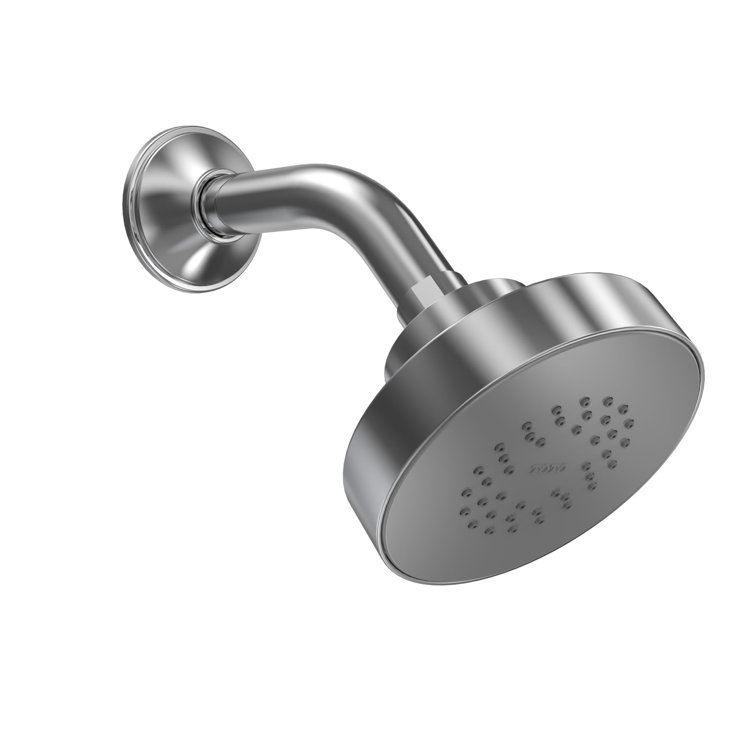
Best Practices for Maximizing Efficiency
When adopting low flow shower heads, efficiency is key. Maximize benefits with these practices.
Regular Maintenance
Keep your low flow shower head in top condition. Regular maintenance is crucial. Follow these simple tips:
- Clean Regularly: Wipe the nozzle to prevent lime and mineral build-up. This ensures optimal flow.
- Inspect for Damage: Look for cracks or leaks. Early detection can save water and money.
- Replace Worn Parts: Change washers and seals as needed. This helps maintain proper function.
A well-maintained shower head keeps performance high and water consumption low. Don’t overlook this easy yet effective step.
Combining with Other Water-Saving Practices
Pair your low flow shower head with other habits for even greater savings:
- Shorter Showers: Limit your shower time. Save water and energy.
- Turn Off When Not in Use: Don’t let the water run while soaping up or shaving.
- Full Loads Only: Run your washer and dishwasher with full loads only.
Combining these practices with your low flow shower head amplifies the benefits. You’ll see bigger savings and a happier planet. Start these habits today and make every drop count.
Top Rated Low Flow Shower Heads
When shopping for eco-friendly bathroom fixtures, it’s helpful to know which low flow shower heads are top-rated. The market has several industry-leading brands that stand out for their commitment to sustainability and quality performance.
Industry-Leading Brands
Many brands have made a name for themselves by offering reliable, efficient low flow shower heads. Some of the notable names include Delta, Moen, and Kohler. These companies consistently receive high marks for their water-saving designs. Another brand to consider is Niagara Conservation, known for its budget-friendly and highly effective products. If you seek luxury combined with eco-friendly features, brands like Hansgrohe and Waterpik are prominent players in this space.
Choosing a product from these trusted brands often ensures durability and optimal water savings. They invest in research and development to bring advanced technology to your home’s bathroom. Remember to look for certifications like WaterSense, which indicates that the product meets environmental standards set by the EPA.
Product Features and Innovations
The top low flow shower heads aren’t just about saving water. They also offer features that enhance your showering experience. Look for shower heads with adjustable spray settings, allowing you to customize pressure and pattern. Some come with technology that softens hard water or filters out chlorine and other impurities.
Innovations like self-cleaning nozzles help combat lime and mineral build-up. This feature prolongs the life of your shower head and maintains consistent performance. Touch-clean spray holes make maintenance a breeze, and temperature control technology maintains water warmth, improving comfort.
Choosing the best low flow shower head means considering your personal preferences, the features offered, and the commitment of the brand to sustainability and innovation. With the right model, you can enjoy every drop of water responsibly, enhancing both your home and the environment.
Frequently Asked Questions
When considering a low flow shower head, questions often arise. Let’s address these common queries.
Addressing Common Concerns and Misconceptions
Many people have concerns about the performance of low flow shower heads. They wonder if the water pressure will be enough, or if such a shower head can truly provide a satisfying experience. It’s important to dispel the myths that equate low flow with low pressure. Modern low flow shower heads are designed to maintain strong pressure. They do this by using advanced flow rate technologies. Contrary to what some may believe, you can enjoy a powerful shower while using less water.
Another concern is the cost of switching to a low flow model. While there is an upfront investment, the savings on water and energy bills quickly add up. Over time, this investment can pay for itself. Plus, you are contributing to environmental conservation.
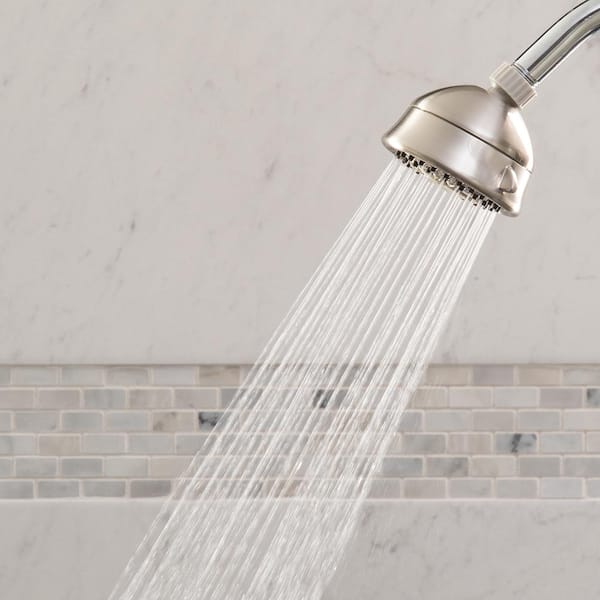
Tips for a Smoother Transition
Here are some tips to make the switch to a low flow shower head easier:
- Choose the Right Model: Take the time to pick a shower head that fits your needs. Think about the type of spray you prefer and any additional features.
- Seek Professional Advice: If you’re unsure about the installation process, consult with a plumber. A pro can give you tips for optimal setup.
- Monitor Your Savings: Keep an eye on your water and energy bills. This will help you see the difference your new shower head makes.
- Educate Your Household: Share the benefits of low flow shower heads with family. When everyone understands the importance, the transition is smoother.
Making these small steps can lead to a successful adoption of a low flow shower head in your home.
